 2017 Peugeot 301 (facelift 2017) Dimensions, Size & Specs
2017 Peugeot 301 (facelift 2017) Dimensions, Size & SpecsMeasurements of the 2017 Peugeot 301, engineered for optimal performance and comfort
| Dimensions | |
|---|---|
| Length: | 4445 mm175.0 in14.6 ft |
| Width: | 1748 mm68.8 in5.7 ft |
| Width (Folded Mirrors): | 1748 mm68.8 in5.7 ft |
| Width (Opened Mirrors): | 1953 mm76.9 in6.4 ft |
| Height: | 1466 mm57.7 in4.8 ft |
| Ground Clearance: | 142-165 mm5.6-6.5 in0.5-0.5 ft |
| Trunk Capacity: | 506 liter17.9 cu ft |
| Trunk Capacity (Max): | 1332 liter47.0 cu ft |
| Weight Specifications | |
| Curb Weight: | 980-1115 kg2161-2458 lbs |
| Maximal permitted Weight: | 1470-1585 kg3241-3494 lbs |
| Tire Specifications | |
| Rims Sizes: |
|
| Tire Sizes: |
|
The Peugeot 301 (2017 facelift) is a compact sedan produced from 2017 to the present, offering a practical and comfortable choice in its segment. Measuring 4445 mm (175.0 inches) in length, it strikes a balance between maneuverability and interior space. The car's width is 1748 mm (68.8 inches) without mirror extension, and 1953 mm (76.9 inches) with mirrors opened, ensuring adequate road presence and driver visibility. Standing 1466 mm (57.7 inches) tall, the 301 presents a sleek and modern profile suitable for urban and suburban driving.
Weighing between 980 and 1115 kilograms (2161 to 2459 pounds) in curb weight, the vehicle maintains fuel efficiency and nimble handling. Its maximum allowable weight ranges from 1470 to 1585 kilograms (3240 to 3496 pounds), which includes passengers and cargo. The sedan provides substantial storage options with a luggage capacity of 506 liters (17.9 cubic feet) in standard configuration, expanding up to 1332 liters (47.0 cubic feet) when rear seats are folded, accommodating various luggage and gear needs.
The Peugeot 301 rides on rims sized either 15 or 16 inches, fitted with tires sized 185/65 R15 or 195/55 R16 respectively, balancing comfort and grip. Its ground clearance varies between 142 and 165 mm (5.6 to 6.5 inches), providing enough clearance for everyday road conditions and mild uneven surfaces.
Overall, the Peugeot 301 (2017 facelift) combines efficient dimensions with practical interior space and offers reliable performance with weight and clearance specifications suitable for city and highway usage. It is a solid choice for those looking for a stylish, spacious, yet compact sedan option.
Discover the standout features that make the 2017 Peugeot 301 a leader in its class
Have a question? Please check our knowledgebase first.
The Peugeot 301 facelift 2017 measures 4445 mm (175.0 inches) in length, providing a moderately sized sedan footprint suitable for urban and suburban use. Its width is 1748 mm (68.8 inches) with mirrors folded, expanding to 1953 mm (76.9 inches) when mirrors are opened, which is important for parking and maneuvering. The vehicle's height stands at 1466 mm (57.7 inches), giving it a sleek, low profile which aids in aerodynamics and handling. These dimensions make the 301 well balanced in compact sedan size, offering a good mix of interior space and manageable external size.
The 2017 facelift of the Peugeot 301 retains a largely similar exterior footprint to the original first generation 301 but introduces subtle styling and feature enhancements that contribute to a refreshed appearance. Dimensionally, both generations hover around the 4440-4450 mm length range and a width in the mid-1700s millimeters, ensuring continuity in interior space and road presence. The facelifted model might offer slight improvements in weight distribution and ground clearance, but overall, it is an evolution rather than a revolution when compared to its predecessor, maintaining core physical attributes while improving aesthetics and usability.
The Peugeot 301 facelift 2017 has a curb weight ranging from 980 to 1115 kg (2161 to 2459 lbs), depending on trim and equipment levels. This relatively light weight for a sedan helps the car remain nimble and efficient. The lower weight positively influences fuel consumption, acceleration, and handling characteristics, making it suitable for everyday commuting and light family use. The vehicle's maximum weight ranges from 1470 to 1585 kg (3241 to 3496 lbs), factoring in passengers and cargo, ensuring it can handle practical loads without compromising stability.
The luggage capacity of the Peugeot 301 facelift 2017 is quite generous at 506 liters (17.9 cubic feet) with the rear seats in their upright position, allowing for ample space for groceries, suitcases, or daily items. When the rear seats are folded down, the cargo space expands significantly to 1332 liters (47.0 cubic feet), offering excellent flexibility for transporting larger items such as furniture or sports equipment. This adaptability makes the 301 very practical for both urban and travel needs.
The 2017 Peugeot 301 facelift features a ride height (ground clearance) varying between 142 mm to 165 mm (5.6 to 6.5 inches). This clearance strikes a balance between providing a comfortable ride and enough height to handle uneven urban roads, minor speed bumps, and rough surfaces that aren’t too extreme. It is suitable for typical city and highway driving conditions but is less ideal for off-roading or significantly rugged terrain. The available clearance helps protect the underside of the car while contributing to stable handling and ride comfort.
The Peugeot 301 facelift 2017 comes with rim sizes of 15 and 16 inches to suit different trims and driving preferences. Tire sizes are matched accordingly, with common options including 185/65 R15 and 195/55 R16. These tire and rim combinations provide a balance between ride comfort, handling precision, and road grip, making the vehicle adaptable to both city streets and open roads. The availability of two size options allows owners the flexibility to prioritize sportier handling or smoother ride quality.
Yes, the Peugeot 301 facelift 2017's dimensions make it well-suited to fit into a standard residential garage. With an overall length of 4445 mm (175.0 inches) and a width of 1748 mm (68.8 inches) with mirrors folded, it generally fits into typical single-car garage spaces, which average around 2400-2700 mm (94.5-106.3 inches) wide and 4800-6000 mm (189-236 inches) deep. However, when the mirrors are extended (1953 mm or 76.9 inches wide), extra care must be taken to fold the mirrors or ensure the garage width accommodates them fully to avoid damage. Managing mirrors and considering garage width is recommended.
The Peugeot 301 facelift 2017 competes in the compact sedan segment alongside cars like the Toyota Corolla, Hyundai Elantra, and Ford Focus. Dimensionally, it is slightly more compact in width and height than some competitors but offers competitive length and notably large trunk space at 506 liters (17.9 cubic feet). Its lighter curb weight (980-1115 kg) can contribute to better fuel efficiency. While its ground clearance is modest compared to some rivals, it maintains a good balance suited for urban and suburban driving. The 301 also brings French styling and comfort-oriented features, differentiating it in a crowded segment focused on practicality and economy.
The Peugeot 301 facelift has a maximum weight capacity ranging from 1470 to 1585 kg (3241 to 3496 lbs), including the vehicle’s curb weight, passengers, cargo, and any additional load. This indicates the maximum safe limit the vehicle can handle without compromising driving safety or voiding warranties. The capacity ensures the sedan can comfortably accommodate a full passenger load plus luggage or gear, making it practical for families, weekend trips, and daily transport needs. Staying within these limits is important for maintaining vehicle handling, braking efficiency, and tire longevity.
With mirrors extended, the Peugeot 301's width increases to 1953 mm (76.9 inches), which is notably wider by about 20 cm compared to the width with folded mirrors (1748 mm or 68.8 inches). This wider footprint is important for increasing visibility and side clearance when driving, but it presents challenges when parking in tight urban spots or narrow parking garages. Drivers often need to fold the mirrors to safely access narrow parking spaces or avoid damage to the mirrors in congested environments. Awareness of this increased width is essential in cities with compact parking spots.
Discover similar sized cars.
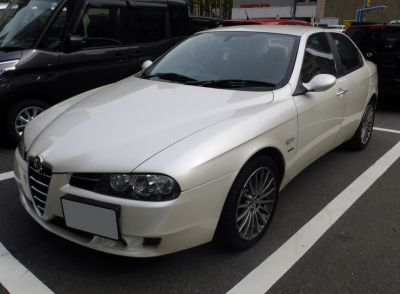
| Production: | 2003-2006 |
|---|---|
| Model Year: | 2003 |
| Length: | 4435 mm174.6 in |
| Width: | 1745 mm68.7 in |
| Height: | 1430 mm56.3 in |
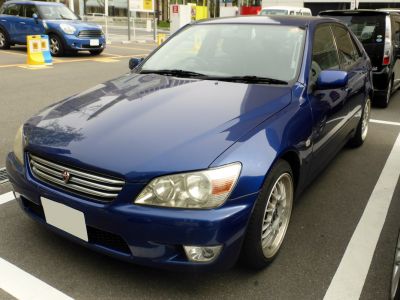
| Production: | 1998-2005 |
|---|---|
| Model Year: | 1998 |
| Length: | 4400 mm173.2 in |
| Width: | 1720 mm67.7 in |
| Height: | 1410 mm55.5 in |
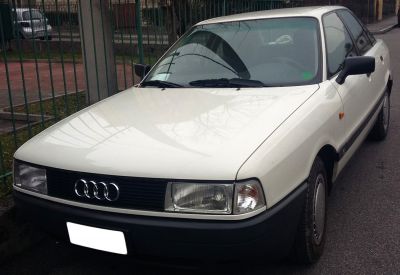
| Production: | 1986-1991 |
|---|---|
| Model Year: | 1986 |
| Length: | 4393 mm173.0 in |
| Width: | 1695 mm66.7 in |
| Height: | 1397 mm55.0 in |
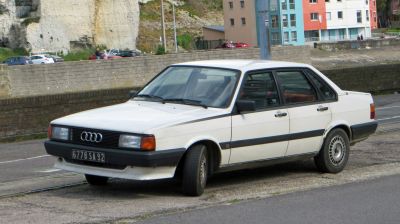
| Production: | 1984-1987 |
|---|---|
| Model Year: | 1984 |
| Length: | 4406 mm173.5 in |
| Width: | 1682-1695 mm66.2-66.7 in |
| Height: | 1345-1397 mm53.0-55.0 in |
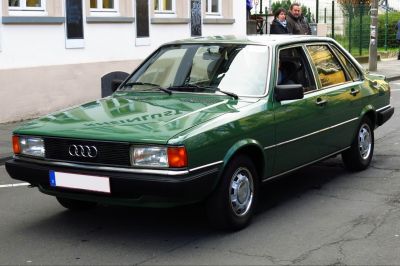
| Production: | 1978-1984 |
|---|---|
| Model Year: | 1978 |
| Length: | 4383-4390 mm172.6-172.8 in |
| Width: | 1682 mm66.2 in |
| Height: | 1355-1376 mm53.3-54.2 in |

| Production: | 1999-2005 |
|---|---|
| Model Year: | 1999 |
| Length: | 4466 mm175.8 in |
| Width: | 1743 mm68.6 in |
| Height: | 1462 mm57.6 in |
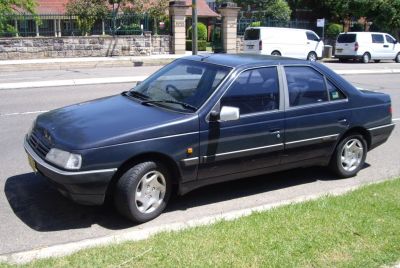
| Production: | 1992-1996 |
|---|---|
| Model Year: | 1992 |
| Length: | 4408 mm173.5 in |
| Width: | 1694-1714 mm66.7-67.5 in |
| Height: | 1390-1406 mm54.7-55.4 in |
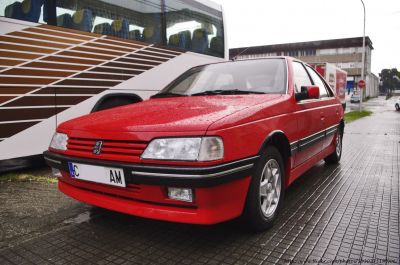
| Production: | 1987-1994 |
|---|---|
| Model Year: | 1987 |
| Length: | 4408 mm173.5 in |
| Width: | 1714 mm67.5 in |
| Height: | 1406 mm55.4 in |
